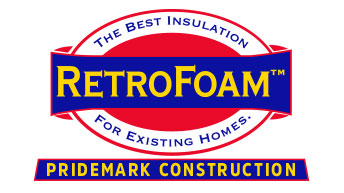RetroFoam
Frequently Asked Questions
I don't think I have any wall insulation. How do I find out?
The easiest way to check if you have insulation in your walls is to have an outlet plate on one of the exterior walls removed, and look into the wall cavity with a flashlight.
Can I have RetroFoam installed from the interior of my home?
We recommend installing RetroFoam from the exterior but it is possible for us to install from the inside.
How many holes will be drilled in my home?
For most homes, there will be one hole drilled in each stud cavity. On brick and a few other types of homes, we will drill more than one hole to ensure that we fill each cavity completely.
HOw do you know when the cavity is full?
The unique nature of RetroFoam™ being a liquid form with the consistency of shaving cream when injected, allows it to flow around any obstacles including water pipes and wiring without getting caught up, filling the entire cavity. Your licensed RetroFoam installer is a professional and approaches every job in a tradesman like
RetroFoam contains water when it is first installed. Where does it go? Will it damage the walls?
Is it safe to fill the cavity of a brick beneer home? Doesn't there need to be a space for ventilation between the brick and wood framing?
A common misconception with brick construction is that the gap between the wood stud and brick surface is there for ventilation. This is partially correct,
Request A Free Estimate
